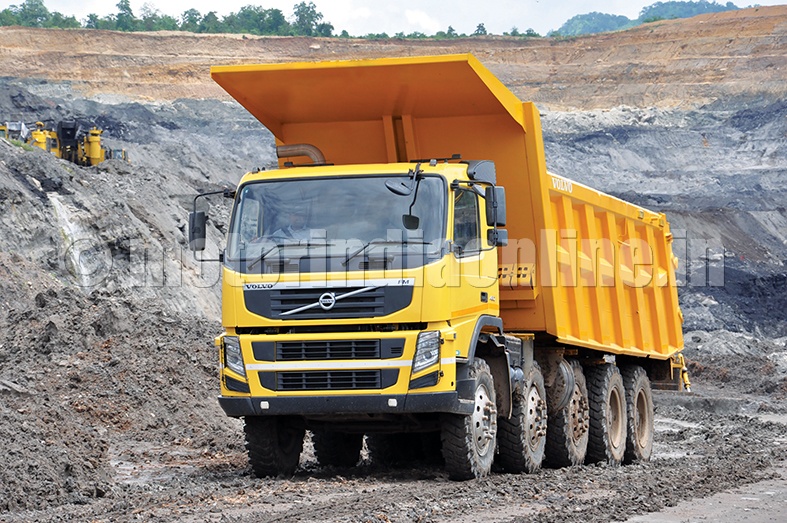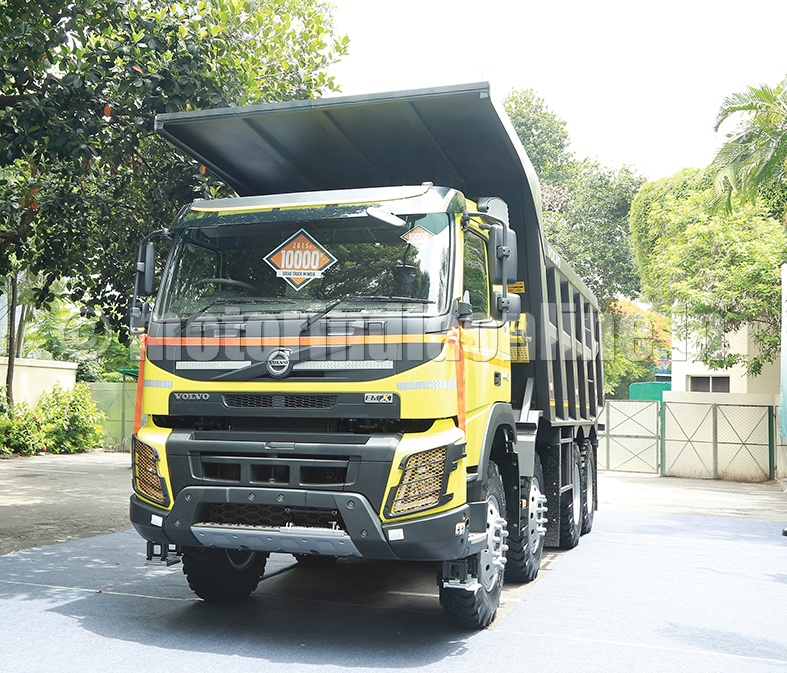10,000th premium truck delivered
Volvo set foot on the Indian soil in 1998 to an immature truck market. Known the world over for its heavy-duty trucks, Volvo believed in working with the existing customer base and raising the benchmark over the next 17 years. And then it was time to celebrate a major milestone – the delivery of its 10,000th truck. MOTORINDIA was part of the occasion in Bengaluru.
“Who can say where the road goes…” sang Enya. About 19 months ago, the world was abuzz with a commercial on the internet showcasing the dynamic stability and balance of two famous entities – the action star Jean-Claude Camille Francois Van Varenberg aka Van Damme and a pair of Volvos – where Enya crooned these soulful lyrics. Honing perfection was showcased at both the body level and at an intrinsic level. When it comes to Volvo, it has proven true in the Indian context. Volvo India was established in 1998 as a fully-owned subsidiary of Volvo, Sweden, with a total capacity of producing 4,000 units of heavy commercial vehicles, and an initial investment of more than Rs. 300 crores.
Volvo – ‘I roll’
Interestingly, Volvo in Latin means ‘I roll’. Literally, the European giant has rolled in success in the Indian market in the last two decades. Faced with an immature and scattered market with less efficient trucks, Volvo decided to raise the bar to a level where its core strength in heavy-duty trucks was appreciated. Its 17 years of hard work paid off handsomely in the form of delivering its 10,000th truck in 2015. The number 10,000, proves Malcolm Gladwell, a journalist and a celebrated author, in his famous book, The Outliers, symbolises world class expertise in any field achieved by practicing it for a total of those many times or hours. By that token, Volvo unveiling its 10,000th truck more than proves its expertise.
Major milestones
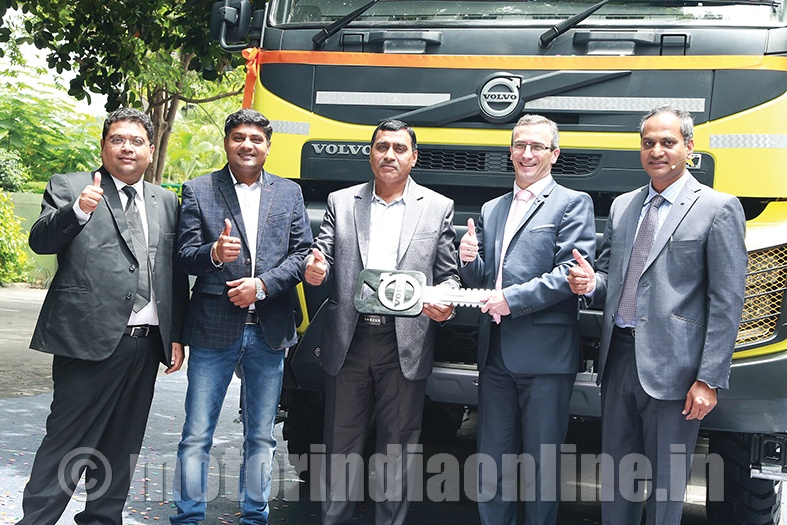
The synergy between the European giant and the Indian truck owner has been in the making in all these years.
Volvo’s two major milestones happened 13 years apart. If it was Abjibhai Dholu, Chairman & Managing Director, Mahalaxmi Infracontract Pvt. Ltd., who received the 10,000th truck in June 2015, its 1,000th was handed over to B. Seenaiah, Managing Director, B. Seenaiah & Co., in January 2002.
Nearly two decades yet only 10,000 trucks may seem an odd calculation to some. But Volvo’s efforts to impart intense customer training and education, and to provide custom-made solutions helped build its customer base from the scratch. And this is what makes Volvo’s achievement realistic.
Mr. Pierre Jean Verge-Salamon, President, Volvo Group Truck Sales, India, shares, “India right now is the most dynamic country, and we want to capture the opportunities.”
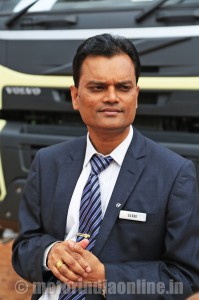
Mr. A.S. Rama Rao, Senior Vice President & Head – Sales, Marketing & Aftermarket, Volvo Trucks, reflects: “In 1999, we introduced the 8×4 model which has now become the industry norm. Even if our trucks are four or five years old, they still deliver an uptime of more than 90 per cent, and that is only possible because we are there with the customers throughout the life cycle of the vehicle. Is there any brand that can actually say they have achieved this? Yes, 10,000 is a huge achievement.”
In the first decade, from 1998 to 2009, Volvo sold 5,000 trucks, and in the last six years from 2009 to 2015, it rolled out the next batch of 5,000.
The long, successful journey
Volvo’s momentous journey in India began with its first FH12 truck. In 1999, FM7 8×4 tippers were launched specifically for the construction and mining industry. The new tippers reduced the work load being handled by 4×2 tippers by 75 per cent. Volvo’s sales growth in the next three years went up by 25 per cent to touch a turnover of Rs. 250 crores by 2001. The year also saw the company overhauling its product range to bring out the new generation FM series trucks.
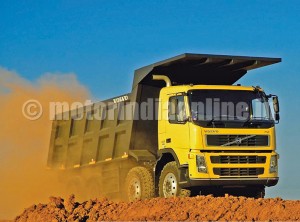
In 2002, FM9 300 8×4 tippers were rolled out. The new model was part of Volvo’s worldwide product renewal program involving an investment of nearly Rs. 2,900 crores in India and introduction of its new series of FM and FH trucks globally. The new FM9 was better than the FM7 model because of its 9 litre engine, longer cab, better ground clearance, tougher chassis and suspension and improved aerodynamic design giving better visibility.
Being the first mover in the premium truck segment in India, Volvo, understandably, experienced slow growth initially. Between 1998 and 2003, Volvo sold over 1,800 trucks. With fuel prices escalating steadily, Volvo’s customers realized the fuel-efficient trucks as an asset. All this despite the fact that Volvo trucks were priced more than double as compared to the existing single rear-axle medium range trucks in India.
With 70 per cent of Volvo’s trucks pressed into mining operations, the demand was high for a vehicle that could work in all conditions. Mr. G.V. Rao, Vice President – Product Strategy, Brand & Marketing, Volvo Group Truck Sales India Region, shares: “Gradients in India are different, with stop and go kind of traffic, compared to other countries. That’s where it comes to fuel efficiency and drivability of the truck. Hence, all these are inbuilt into the design parameters.”
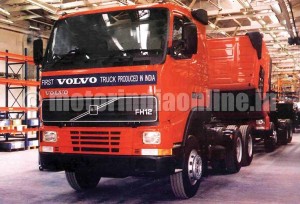
By 2005 Volvo’s India operations went up a notch in quality and product efficiency when it started exporting FM12 420 8×4 tipper trucks to Korea. These trucks were designed for hauling construction material and to ply on highways. Offering speeds of upto 100 kmph, the FM12 was Euro III compliant with a 12-litre D12D engine and was fitted with Volvo Engine Brake. These Korea-bound trucks were equipped with I-Shift gear box along with an option for manual gear changes. Their cabins were crash-tested and air-conditioned complete with ergonomic design and better visibility. They also had fully air-suspended seat with automatic control and memory of last adjustments.
Early 2006 saw the launch of FM9340 8×4 tipper built specifically for mines that ranged in production of 3-5 mtpa. By now, over 1,000 Volvo tippers were already operational in mines across India. The new FM9340 8×4 could handle steeper gradients for upto to 19 hours a day. It also boasted of vertical exhaust, and an optional but unique feature called ‘heat body’, helping trucks avoid sticky material in the mines due to heating. This was also the year when Volvo made India its hub for truck product development and IT sourcing to cater to pan-Asia.
By the middle of 2006, Volvo launched new models in FH and FM series, with 13-litre engines giving a powerful output of 520 hp, besides being Euro III compliant.
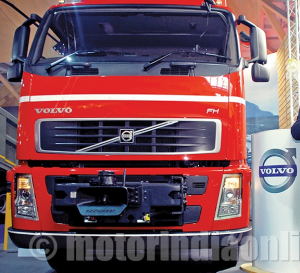
Capable of equipping its trucks with Euro 5 and 6 levels the world over for reducing emissions, Volvo adapts to each country’s level of acceptance. Mr. Verge-Salamon says: “Volvo adapts to the local requirements. If the authority wants Euro 5 or 6, we are ready. But each country must set up proper infrastructure to supply the additive and it is extra cost. It is always a balancing act. Ideally, everybody could have Euro 6.”
If FH model was an ideal truck for heavy haulage operations, the FM400 model was poised for use in petroleum and chemical transportation, mining and construction, bulk haulage and express cargo. Both the models offered the I-Shift advantage.
Mr. G.V. Rao observes: “Mining is one the toughest applications – be it the depth of the mine or the surface, the truck has to negotiate steep gradient. So the whole configuration of the truck has been made to meet all the demands. When the driver has to negotiate steep gradients, the whole driveline, including the gear shift mechanism, has to be smooth and that’s where the I-Shift has been customized for mining operations to simulate the best driver in that condition.”
By now, Volvo had gradually become known for its pre-truck-roll-out driver training, preventive mechanism, service agreements and its flexibility to work closely with its customers to improve vehicle utilization.
Mr. Verge-Salamon explains how Volvo works closely with its customers everywhere, “We reach out to customers, which gives us an in-depth understanding of the challenges our customers experience and hence we customize to meet the challenges.”
Mr. Rama Rao adds: “When we started, we expected our customers to send their trucks to our workshops which are far off from mines. But we changed that. Their requirement is definitely about ensuring their uptime, bringing down the cost not in absolute terms but per cu.m. cost. That is what we are always working at.”
The entry of the FM340 6×4 tipper in the latter part of 2007 was acknowledged with high spirits because it was designed to work in congested mining conditions like tunneling. Hence it had a shorter radius and better ground clearance. It also had six-cylinder in-line diesel engine with direct injection. The year also witnessed Volvo capturing 50 per cent market share in the mining segment and achieving 60 per cent repeat purchases. By now, customers owned the largest fleet with over 250 Volvo trucks.
In the 10th year of its entering India, in 2008, Volvo signed a joint venture agreement with Eicher Motors Ltd. creating Volvo Eicher Commercial Vehicles Ltd. for better visibility. Having contributed more than Rs. 10 million, Volvo owned 50 per cent of the newly-formed VECV. All the future Volvo Group truck projects in India were to be routed through the JV company. It was in this year that Volvo trucks started getting equipped with Hyva hydraulic kits with telescopic cylinders.
In 2009, FM400 8×4 tipper with rock body was launched for special applications in the quarries. The company had trained over 14,000 drivers.
The first-of-its-kind five-axle 13-litre Dump truck FM480 10×4 was introduced in 2012. Specifically built for deep opencast mining operations the company attracted orders for 75 trucks at the launch from the eager customers.
Yet another renewed product range was unveiled in 2014 for which Volvo invested $3 billion, 14 million engineering hours and 21 million kilometres to test the vehicles. The improved FH model, which had received the ‘International Truck of the Year 2014’ Award in Europe, was primarily built with driver in focus. The FH model, along with FM and FMX models, promised to be the most advanced technologically that Volvo India ever made. All the three had I-Shift automated gearbox technology primed for rugged mining operations, and Dynafleet Telematics enabling the customer to view the real time location and performance of their truck.
The FH520 model promised 33 per cent more load carrying capacity up to touch 200 tons. The FMX, designed for mining and construction fields, was the culmination, as yet, of Volvo’s core competency in this segment.
Mr. G.V. Rao shares, “when the FMX platform with I-Shift was developed the whole inputs went from India, for it is one of the toughest markets.”
The FMX440 8×4 tipper had an increased body capacity of 19.5 cu.m., while the new FM440 6×4 tractor was built with a 125 ton puller.
Mr. Rama Rao adds: “The FH, FM and FMX models cater to different segments. The FH is for the long distance ODCs, the FM is for specific applications like fire tenders and small-scale ODCs, while the FMX is for off load trucking for construction management.”
Lifting of the ban on coal mining, after the industry slump in the last two years, has given a fillip to Volvo sales growth.
Volvo surely knows where the roads are leading to for it. As its future projection also reflects, Volvo trucks are poised to roll out the next 5,000 trucks in the next couple of years.
In 2015, Volvo India looks forward to:
• Having sold 900 units in 2014, hopes of 50 per cent growth rate in the current financial year are high
• 60-80 per cent repeat sales
• 60 per cent market share in the premium truck segment
• Premium truck segment slated to grow by 50 per cent
